
This Executive Update highlights the FAST Act and recent conferences in Wisconsin and nationally.
2015 WAPA Conference: People Are Talking
Wisconsin Shows Strong at TRB
NAPA Annual Meeting Update
A long-term law (at long last) is good news for Wisconsin
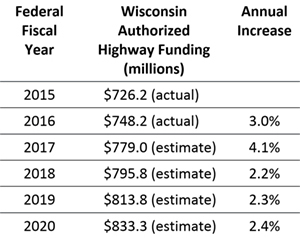
The numbers look good for Wisconsin (see table at right). For our state, authorized highway funding is expected to increase annually over the 5 years (FFYs 2016-20), with a bump as high as 4 percent for FFY 2017.
These figures represent a significant increase above the $710 million annual federal highway funding that the 2015-17 state budget previously assumed. This means more maintenance dollars for our State Highway Rehabilitation program and more asphalt work, both now and in the future
A quick look at FAST
Details of the FAST Act can be found on the U.S. DOT web page, but some of the highlights of the law include:
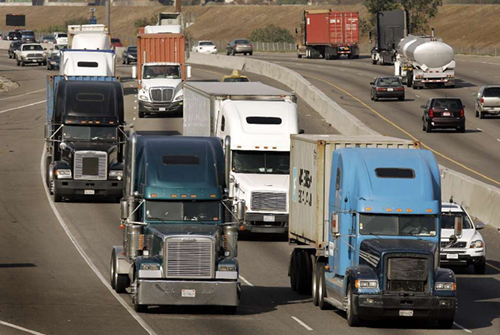
- A new $1.26 billion per year National Highway Freight Program to provide states with resources for highway-specific freight improvements.
- A $900 million per year Nationally Significant Freight and Highway Projects Program to make grants available for large-scale, multimodal projects.
- Expanded opportunities for the simplest form of environmental review—categorical exclusions—and delegation of reviews to states.
- Expansion of the current exemption to the hours of service rule for drivers of construction vehicles, allowing those operating within a 75-mile radius to restart their workweek after 24 hours of rest instead of 34 hours.
- A $5 million, 3-year study “on the actions needed to upgrade and restore the Dwight D. Eisenhower National System of Interstate and Defense Highways to its role as a premier system that meets the growing and shifting demands of the 21st century.
You can read more about the FAST Act provisions in the article below on the NAPA Annual Conference.
Celebrating a qualified success
Typical of any compromise, the FAST Act didn’t give the transportation industry everything it wanted. For example, there is no expansion of states’ ability to toll Interstate highways (though the bill does set deadlines for approved state pilot projects to move forward).
Also left unresolved is how to sustainably pay for transportation over the long term. The law settles for bridging the gap between federal fuel tax receipts and annual outlays through a series of unrelated offsets within the federal budget. This continues to weaken the user fee concept for transportation investment.
So while we still have significant funding challenges ahead, the bottom line is our industry should be grateful for the assurance of long-term funding. It will allow WAPA members to make big investments for future infrastructure projects, such as hiring and training staff and buying construction equipment.
The annual WAPA Conference held in Madison in December was a big success thanks to the efforts of our presenters, sponsors, exhibitors, and participants. Attendance at the event has grown yet again, proving that the conference is the place to be after Thanksgiving to learn what’s happening in asphalt in Wisconsin. The full agenda and all of the presentations from the main conference sessions and technical breakout sessions can be found on the 2015 Conference Web Page.
We’re well into the New Year, and people are still talking about what was heard and discussed at the event:
- Wisconsin’s new Asphalt Bid/Mix Specifications were the focus of presentations by WisDOT’s Barry Paye and WAPA’s Deb Schwerman in both the general and technical sessions. This was part of a coordinated effort to ensure a smooth transition to the new specs for all stakeholders in the private and public sectors alike. With these specifications taking effect in 2016, the Q-and-A opportunities and the review of the Web Tool and Reference Materials were particularly timely.
Since the conference, we’ve heard from WisDOT staff about how these presentations helped them understand their own agency’s new rules, and WAPA members in attendance in Madison have arranged follow-up lunch-and-learn presentations so their entire companies can hear the message.
- State highlights included a slate of exciting pilot projects and technical initiatives at WisDOT, such as cold in-place recycling projects, cold weather paving, and paving inspection. WisDOT’s Rebecca Burkel also highlighted key findings from taking part in a scan tour on high-reclaimed asphalt pavement in Japan.
Craig Thompson drove home the need for Wisconsin to “Just Fix It,” a major awareness campaign for the Transportation Development Association of Wisconsin, and Curt Witynski of the League of Wisconsin Municipalities provided insight on state legislative agendas.
- Regional and national experts helped provide perspective beyond our borders. MnROAD’s Ben Worel opened eyes about the capabilities of Minnesota’s road research test track and its major results to date. Participants also learned about maintenance best practices in Minnesota during Thomas Wood’s technical session, and word is spreading. Cities and counties have already expressed interest in trying out some of the techniques discussed in Wood’s session.
Heather Dylla outlined NAPA’s effort to develop Environmental Product Declarations, an important effort to keep in step with the public demand for sustainable principles and practices. Stakeholders are eagerly awaiting the product category rules and EPDs to be finalized by NAPA later this year.
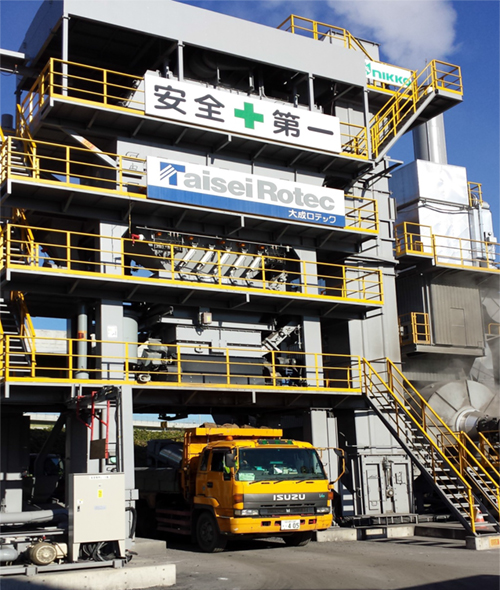
In all, we were extraordinarily pleased with the great information and follow-up discussion at the general and technical presentations. WAPA would like to offer yet another big “thank you” to everyone involved with the conference. If you’d like to know more about any information presented at the event, please continue to reach out to presenters or contact WAPA.
Finally, don’t forget to mark your calendars for the 2016 WAPA conference, to be held November 29th and 30th in Madison.
WAPA Director of Engineering Deb Schwerman participated in the 2016 TRB Annual Meeting, and she reports that Wisconsin was again out in full force in Washington, D.C. Deb notes that there were more than 80 workshops and sessions where Wisconsin was represented by a moderator or presenter. Fully five campuses in the University of Wisconsin system participated: Madison, Platteville, Milwaukee, Oshkosh, and Superior.
Among the Wisconsin sessions:
- Two of the six talks in Session 548 (“Opportunities and Barriers to Increased Use of Recycled Content”) featured Wisconsin presenters. Angela Pakes Ahlman of UW–Madison talked about what’s next for reducing greenhouse gas emissions, and Steve Krebs of Wisconsin DOT discussed standards and specifications. How our state is overcoming technical and policy hurdles related to increased recycled products is sure to help guide other agencies worldwide.
- In Session 853 on the state of the practice of thinlays, Erv Dukatz with WAPA member Mathy Construction gave a producer’s perspective on thin overlays. He highlighted the ingenuity and resources that were needed to meet all of WisDOT’s requirements, and he did a great job of talking about how far Wisconsin has come. Our asphalt industry definitely embraces a “make it work” attitude.
- Other WAPA members who presented were Mathy’s Gerry Reinke (Session 462 on mix performance) and Andrew Hanz (Session 817 on pavement preservation). Carl Johnson with Stark Pavement presided over a session, and other member companies attending the TRB Meeting included Payne & Dolan and Northeast Asphalt.
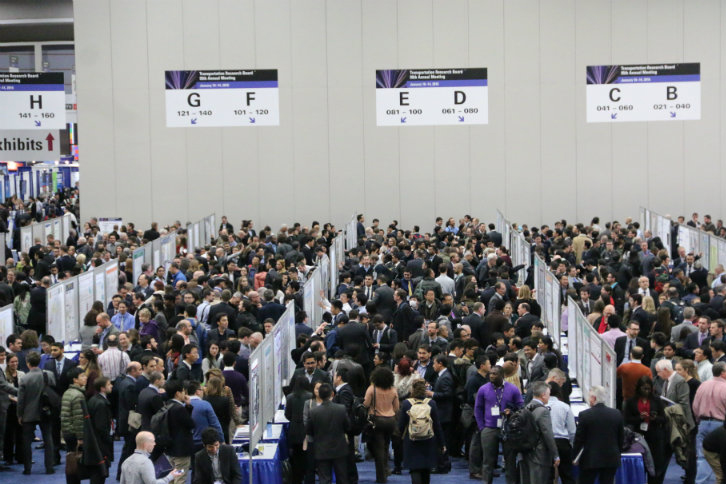
“It seems like everyone has a rejuvenator product on the market or in the pipeline to try to address durability concerns and increase performance,” Deb says. “Hopefully this research will guide the industry in the right direction.” She reports that other topics that got attention at the TRB meeting were material aging mechanics and testing parameters; performance testing; RAP and RAS; mix design; and construction.
Deb also had a chance to visit the exhibitor area. “Companies from around the world brought their latest and greatest to the exhibit hall,” she says. “It was quite impressive.”
Between what Deb saw from the exhibitors and what she learned in the sessions, there’s a lot to be excited about in the months (and years) ahead.
NAPA held its annual meeting in February, and it was a great chance for WAPA to form and strengthen connections at the national level and with other states. Among the many highlights (the Conference Program has full details), NAPA’s Asphalt Industry Analysis of the FAST Act called out the major provisions of the new funding law and explained how it builds on previous federal aid programs. (See the article above for WAPA’s state perspective on the FAST Act.)

In addition, time was set aside for state asphalt pavement association directors to meet. This was an excellent opportunity for me to share best practices with my counterparts and learn how other states are innovating and overcoming challenges similar to those we face in Wisconsin.
Research, deployment and marketing
NAPA devoted time at the meeting to review its full slate of research, deployment and marketing efforts. This work to advance asphalt pavements is a big part of why NAPA is so valuable to state associations like ours.
A complete Summary of NAPA Projects describes all completed and in-progress projects, but a few caught my eye as particularly noteworthy from a Wisconsin perspective.
- NAPA used the results of the Annual Asphalt Pavement Industry Survey on Recycled Materials and Warm-Mix Asphalt Usage to develop an infographic highlighting the benefits of warm mix asphalt pavements (at right). Wisconsin is a leader in adopting warm mix, helping drive up the impressive statistic that “nearly a third of all asphalt pavement mixtures are produced using warm-mixed technologies.”
- Advancement of Innovative Asphalt Technology is a joint effort between FHWA and NAPA to develop technologies to design, specify, construct, and preserve asphalt pavements. NAPA’s new Best Practices for RAP and RAS Management that came out of this effort is sure to be of interest in Wisconsin, given the high use of reclaimed asphalt pavement and recycled asphalt shingles in our state.
- Investigations conducted for Modeling of Pavement Characteristics on Vehicle Rolling Resistance: A Critical Analysis led to fact sheets like “How Pavement Influences Vehicle Fuel Economy.” It makes the case for why smooth pavements like asphalt make the best economic sense for Wisconsin travelers.
- Did you know that attending NAPA Talks Webinar Series is now free for NAPA members as well as members of public agencies? More than ever, NAPA is making use of its webinars to deliver the latest information and resources that matter most. Recordings of past webinars remain available as well.
WAPA Members Receive National Awards
At the Annual Meeting, WAPA member Rock Road Companies received recognition for 30 years of consecutive NAPA membership. In addition, two other WAPA members received 2015 Quality in Construction Awards at the conference. The award program recognizes pavements constructed in sustainable and innovative ways, and these four projects received NAPA’s Green Practices recognition as well.
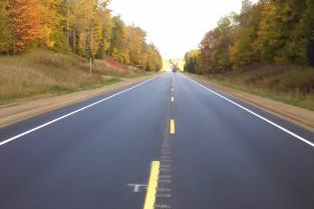 |
Northeast Asphalt STH 70 in Forest and Florence Counties Pavements under 50,000 tons division |
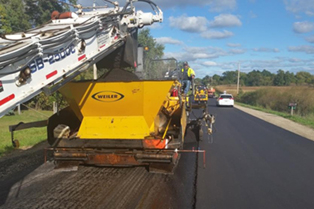 |
Payne & Dolan Various Locations in Racine County Pavements under 50,000 tons |
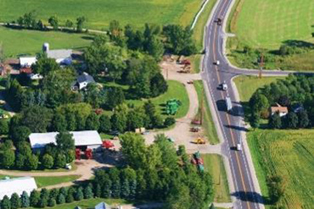 |
Northeast Asphalt STH 26 from Waupun to Rosendale Pavements over 50,000 tons |
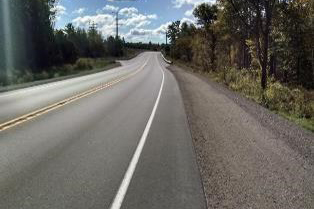 |
Northeast Asphalt US 141 from Wausaukee to Beaver Pavements over 50,000 tons |

On the topic of awards, I’d like to mention too that at the 2016 WTBA Contractor-Engineer Conference, WAPA member D.L. Gasser Construction received the Excellence in Asphalt Paving Award for CTH H reconstruction between Reedsburg and Wisconsin Dells in Sauk County. (Read more about the project and award).
As you can see, there is a lot going on in the world of asphalt. We hope you found this Executive Update useful and that we hit on the highlights of what’s new and relevant to our readers. However, if you have any topics or features you would like to see covered in future issues, please let us know. We would greatly appreciate your feedback.
As always, please don’t hesitate to contact us if you have any questions or if there is ever any way we may be of assistance.
Thank you.

Brandon Strand
Wisconsin Asphalt Pavement Association




